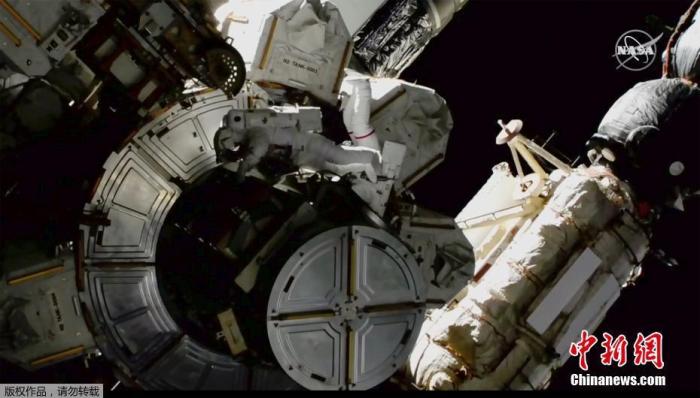China News Service, April 1 According to a report from the Russian Satellite Network on April 1, sources in the field of Russian rockets and aerospace said that the unplanned strong load generated by the U.S. and European spacecraft when controlling the orientation of the International Space Station may cause Russia’s “stars”. "No. Module cabin has a sealing failure.
Data map: Two astronauts on the International Space Station completed a space walk and performed technical maintenance on the space station.
According to reports, a source pointed out that “when the US space shuttle or European automatic cargo spacecraft (ATV) is manipulating the International Space Station, there will be strong unplanned loads. Professionals are studying whether this is the cause of the cabin's sealing failure. "
From 2008 to 2015, a total of 5 European automatic cargo spacecraft stayed on the International Space Station, all docked with the "Star" module cabin, which was used to control the orientation and correct orbit of the International Space Station in space; the US space shuttle before 2011, Also performed similar tasks.
According to the report, sources disclosed that Russian astronauts are continuing to search for the failure of the seal of the transition chamber of the "Xingchen" module cabin.
The source explained, “It is speculated that the air is leaking from the sealing port. This is the part where the cable or pipe passes through the cabin to the outer surface of the module cabin. The'Alliance MS-18' manned spacecraft will be shipped in April. Leak detector to further find possible leaks."
In September 2019, a small amount of air leakage was detected on the International Space Station.
In October 2020, astronauts found a crack in the transition room of the Russian "Star" service module, and later found a second crack.
Both leaks were blocked in March 2021.
The Russian Aerospace Corporation previously pointed out that the air leak does not pose a danger to the International Space Station and the investigation team.
Previously, the air pressure of the International Space Station dropped at a rate of up to 0.4 mm Hg per day, which was far less than the accident value of 0.5 mm Hg per minute.
In addition, the International Space Station has air, oxygen, and nitrogen reserves that can be used to maintain atmospheric pressure, and the cargo spacecraft will also deliver the required gas on time.
At present, the members of the ISS expedition team include Russian astronauts Sergey Ryzhkov and Sergey Kudy-Sverchikov, and American astronauts Catherine Rubens, Michael Hopkins, and Victor Glover and Shannon Walker, and Japanese astronaut Soichi Noguchi.

